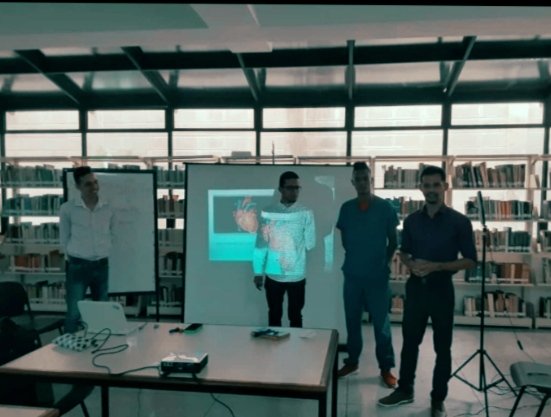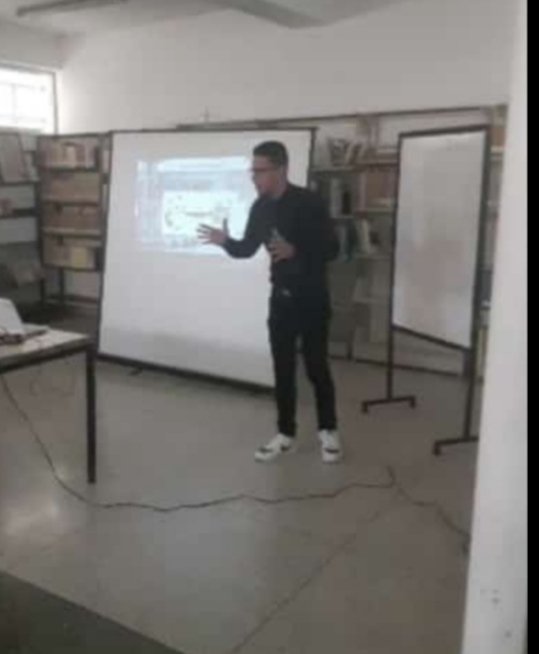Queridos amigos, les saludo con cariño y gran entusiasmo, agradeciendo a Dios por un día más, y a la plataforma por el apoyo constante. Gracias por la estima y la aceptación.
Cómo de costumbre les deseo mucha salud, vida, esperanza y buena vibra, con la fe puesta en el Altísimo de un mundo mejor, dónde abunde el entendimiento y la paz.
Está semana impartí, junto a grandes compañeros, un taller que trataba sobre "Sistema de Conducción Cardíaco", tema que hoy me gustaría compartir un poco con ustedes.

El corazón se caracteriza por tener cinco propiedades fisiológicas las cuales son:

1- Automatismo o Cronoprotismo, el cual es posible ya que nuestro sistema cardiovascular tiene un sistema de invervación intrínseco generado a nivel de la aurícula derecha, cerca de la desembocadura de la vena cava superior donde se encuentra el modo sinusal o nódulo sinoauricular, dónde la frecuencia cardíaca es entre 60-100 latidos por minuto.
2- Cronoprotismo o conductividad: Una vez generado el impulso cardíaco debe trasladarse a todo el corazón, dicho impulso que se generó en el nódulo sinusal se traslada a la aurícula izquierda a través del "haz de bachmann" para luego traslarse hacia los "haces internodales anterior medio posterior" y de allí al módulo auriculo-ventricular.
Cuando existe un daño como un infarto o una insuficiencia cardíaca, el marcapasos natural ya no sería el nódulo sinoauricular, ni el nódulo sinusal, entonces el encargado de asumir esa función sería el nódulo auriculo-ventricular por lo tanto habría una variación de la frecuencia cardíaca, por lo general 40-60 latidos por minutos.
3- Excitabilidad: Ya con el impulso en curso, y con la conductividad llevada a cabo, se pone de manifiesto la excitabilidad de las fibras cardíacas, ya que estando en reposo las fibras cardíacas están negativas, y deben despolarizarse osea ponerse en positivas.

4- Contracción: Ocurrida la excitabilidad de las fibras cardíacas, dan paso a la contracción de las mismas produciendo la salida de la sangre lo que se conoce como sístole.
5- Relajación: Este último proceso viene precedido de la contracción, a acá los ventrículos se relajan, desarrollo conocido como diástole.
En continuación con el sistema de conducción, y explicado el mecanismo
hasta el nódulo auriculo-ventricular, se debe explicar que este viaja a través del "haz de his" quien nos genera dos ramas una izquierda y una derecha.
La rama izquierda antes mencionada se subdivide en superior e inferior viaja a través de las fibras de Purkinje. En consecuencia si se siguen generando más ramas produciría un descenso de la frecuencia cardíaca incluso, hasta el punto de ser incompatible con la vida.

El sistema de conducción del corazón es un tema emocionante, que espero poder extenderlo en el futuro a través de escritos y videos.
Gracias.
Dios siempre de Cabrestero.
PD: Fotos y dibujos de mi propiedad.
ENGLISH:
Dear friends, I greet you with love and great enthusiasm, thanking God for another day, and the platform for the constant support. Thank you for the esteem and acceptance.
As usual, I wish you a lot of health, life, hope and good vibes, with faith in the Almighty of a better world, where understanding and peace abound.
This week I gave a workshop on "Cardiac Conduction System", a topic that I would like to share a little with you today.
The heart is characterized by having five physiological properties which are:
1- Automatism or conoprotism, which is possible since our cardiovascular system has an intrinsic innervation system generated at the level of the right atrium, near the mouth of the superior vena cava where the sinus mode or sinoatrial node is found, where the heart rate is between 60-100 beats per minute.
2- Chronoprotism or conductivity: Once the cardiac impulse is generated, it must be transferred to the entire heart, said impulse that was generated in the sinus node is transferred to the left atrium through the "Bachmann bundle" and then moves towards the "internodal bundles". anterior middle posterior" and from there to the atrioventricular module.
When there is damage such as a heart attack or heart failure, the natural pacemaker would no longer be the sinoatrial node, nor the sinus node, then the one in charge of assuming that function would be the atrioventricular node, therefore there would be a variation in heart rate , usually 40-60 beats per minute.
3- Excitability: Already with the impulse in progress, and with the conductivity carried out, the excitability of the cardiac fibers is revealed, since at rest the cardiac fibers are negative, and must depolarize, that is, become positive.
4- Contraction: Once the excitability of the cardiac fibers occurs, they give way to their contraction, producing the outflow of blood, which is known as systole.
5- Relaxation: This last process is preceded by contraction, here the ventricles relax, a development known as diastole.
In continuation with the driving system, and explained the mechanism
to the atrioventricular node, it should be explained that it travels through the "bundle of his" which generates two branches, one left and one right.
The aforementioned left branch is subdivided into superior and inferior and travels through the Purkinje fibers. Consequently, if more branches continue to be generated, it would produce a decrease in heart rate, even to the point of being incompatible with life.
The conduction system of the heart is an exciting topic, one that I hope to expand on in the future through writing and video.
Thank you.
God always Cabrestero.
PS: Photos and drawings of my property.
